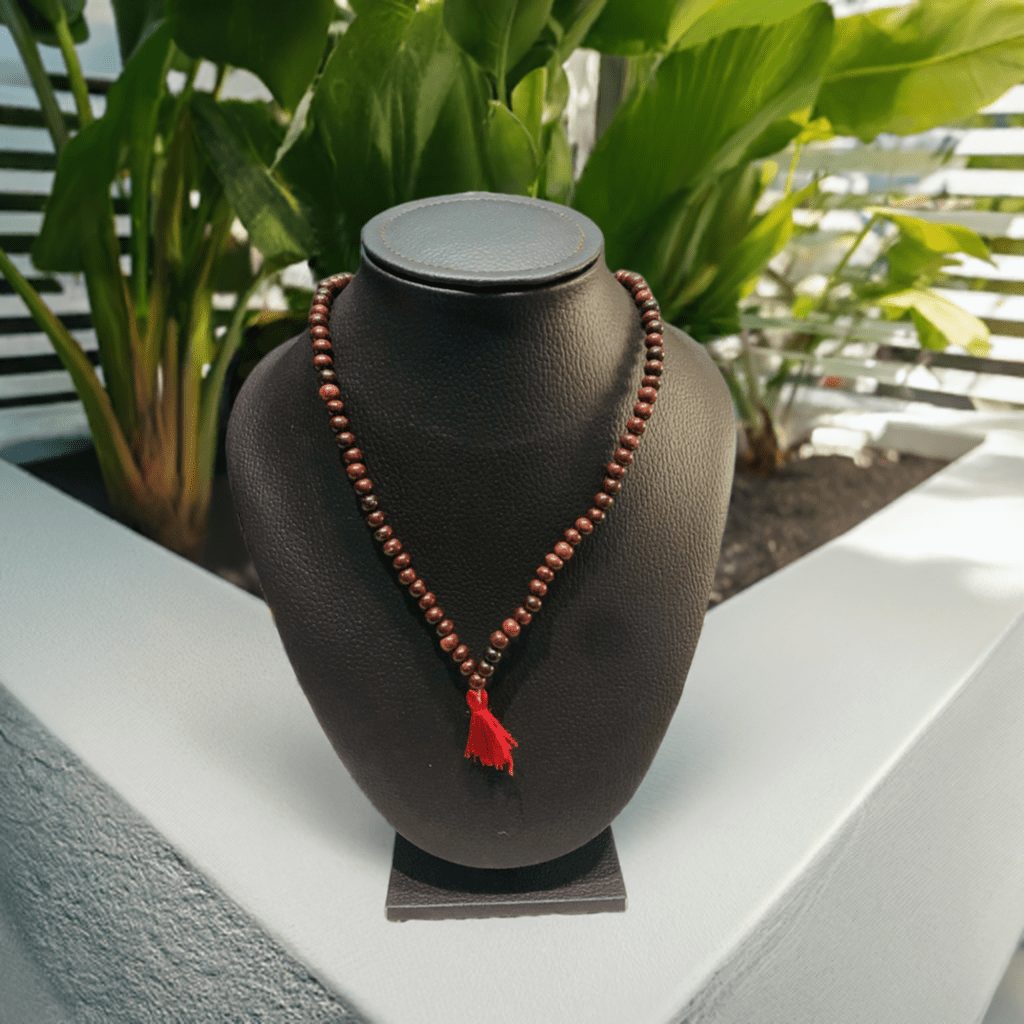Sengali often interwoven with terms like karungali and devadaru stands as a testament to the enduring reverence for nature’s gifts in the world of the spiritual seeker. Whether cradled in prayer beads, worn as protective talismans, or venerated as a material of temple craft, Sengali permeates the spiritual ecosystem of Hinduism with a quiet, powerful presence.
But what is Sengali mala? How does it connect to ancient wisdom, modern self-care, and the search for spiritual transformation? In this blog, we’ll peel back each layer, exploring its origins, uses, significance, and impact armed with both tradition and the latest insights.
What Is Sengali Mala?
The Essence of Sengali
Sengali is a type of sacred wood revered in Hinduism for its spiritual and medicinal properties. Known for its dense, dark color—hence sometimes called karungali (literally “black wood” in Tamil)—Sengali is often associated with ancient trees like ebony or related species found in the dense forests of South India.
Devotees believe that Sengali wood absorbs and radiates positive energy, serving as a conduit for spiritual vibrations during meditation and worship. This wood is favored for making malas (prayer beads), sacred jewelry, and temple artifacts, underscoring its role as a bridge between the earthly and the divine.
Karungali, Sengali, and Devadaru: Are They The Same?
While Sengali and karungali are often used interchangeably in South Indian traditions, devadaru usually refers to the Himalayan cedar—a different tree but similar in sacredness. All three woods are celebrated for their purported ability to cleanse one’s aura, induce calm, and root practitioners in spiritual discipline.
Historical Reverence
Ancient scriptures and temple records reveal the esteem in which Sengali has been held. From artisan-crafted deity idols to the mala beads clutched by sages during penance, Sengali’s journey is one of enduring sacredness. An anecdote from a renowned temple priest in Tamil Nadu illustrates this:
“The Sengali mala is passed down generations in my family. My grandfather always said, ‘This wood carries silent wisdom listen to it, and your heart will follow.’ Those words still echo in the temple corridors.”
Beyond Spirituality
Research conducted by botanical institutions highlights Sengali’s natural durability and antimicrobial properties. Modern-day wellness practitioners even ascribe calming, grounding effects to wearing Sengali malas, attributing it to “forest therapy”—the science-backed calming effect of wood oils and natural compounds.
The Sengali Mala: More Than Just Beads
Craftsmanship and Ritual
The making of a Sengali mala—typically 108 beads—requires skilled artisanship. Traditionally, the wood is gathered respectfully, ensuring sustainable practices. Each bead is shaped, polished, and threaded with sacred intention, transforming the raw material into a spiritual tool.
Daily Use and Spiritual Benefits
Practitioners use Sengali malas for mantra chanting (japa), meditation, and mindfulness. Adherents believe that the mala helps maintain focus and shields against negative energy. Some wear Sengali as bracelets or pendants for all-day protection, especially during periods of stress or transition.
Current Popularity and Awareness
With the resurgence of interest in mindfulness and nature-based spirituality, Sengali products have found new admirers beyond traditional circles. Eco-conscious seekers prefer Sengali for its renewable qualities; when sourced responsibly, it embodies both spiritual and environmental harmony.
Prominent spiritual teachers have commented on this trend:
“Sengali connects you to the earth, to the divine, and to yourself. It is a gentle reminder that simplicity and depth often go together,” says a contemporary yoga guru.
Faith, Science, and Skepticism
No exploration is complete without addressing doubts. Some skeptics view the spiritual benefits of Sengali as mere placebo effect, arguing that the power lies not in the wood, but in the devotee’s mind. Scientific studies on the physical benefits of wood exposure are still emerging, and concrete clinical data about Sengali’s esoteric properties are limited.
However, even critics acknowledge the emotional and psychological comfort that comes from ritual, tradition, and tangible objects of faith.
Practical Uses: How to Choose and Care for Sengali Mala
Selection Guide
- Authenticity: Look for reputable sources, as fake or dyed beads are common.
- Texture & Scent: Genuine Sengali wood has a subtle, earthy aroma and smooth feel.
- Purpose: Decide if you want a mala for japa, daily wear, or ritual use.
- Eco-ethics: Support artisans committed to sustainable sourcing.
Buy Authentic Sengali mala at spiritualguru.lk with confidence.
Care Instructions
Sengali malas should be kept clean, wiped gently with a soft cloth, and stored in a pouch or box. Avoid water exposure and chemical cleaners to maintain the potency and appearance of the wood.
The Future of Sengali: Tradition Meets Transformation
As Indian spirituality meets global wellness movements, Sengali’s potential is only expanding. Researchers are studying its unique properties, while craftspeople innovate with new designs. The dialogue between faith, science, and sustainability continues—making Sengali more relevant than ever.
Why Sengali Endures
Sengali mala is more than a string of beads or a spiritual fashion statement. It is a vessel of history, a daily companion for seekers, and a living symbol of Hindu wisdom. Whether you approach it from a lens of faith, curiosity, or holistic well-being, its impact is unmistakable.
As you consider bringing Sengali into your practice, remember: every bead tells a story, every story is a bridge, and every bridge leads a little closer to the sacred—the eternal within and around us.
May your journey with Sengali mala be guided by clarity, wisdom, and a deep connection to the spiritual heart of Hindu tradition.


Leave a comment